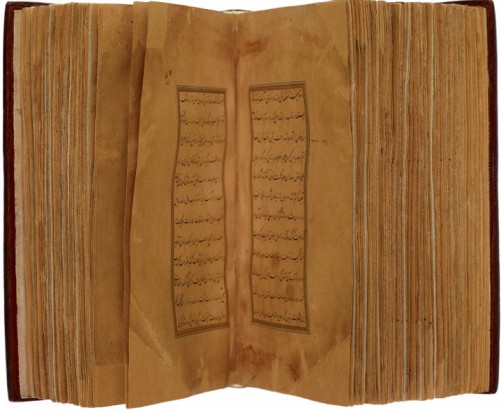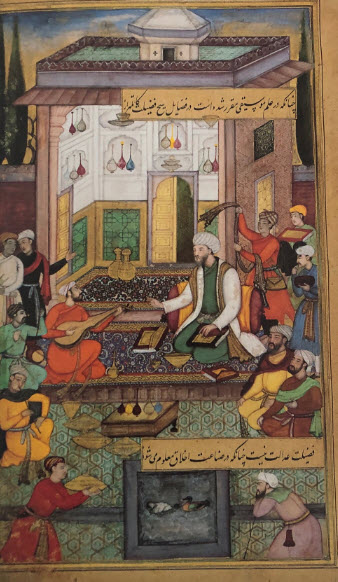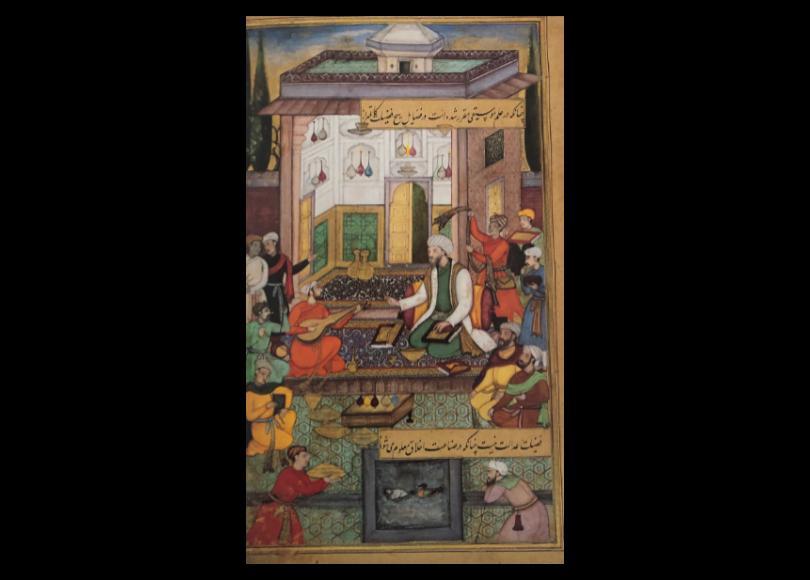Nasir al-din al-Tusi (1201-1274) the foremost philosopher, scientist, astronomer, mathematician, and scholar of the thirteenth century, completed the highly esteemed book on ethics, Akhlaq-i Nasiri, (Nasirean Ethics), around 1235. Al-Tusi compiled the text while in the service of the Ismaili governor of Quhistan (northeastern Persia) Nasir al-Din Abd ar-Rahim b. Abi Mansur. Tusi named the work after his learned patron, who had commissioned him to write it, opening with a dedication to him, also invoking the blessings of the contemporary Ismaili Imam, Ala’ al-Din Muhammad (Madelung).

A Manuscript of Ethics of Nasir (Akhlaq-i Nasiri), Lahore, Pakistan, 1590-1595. Source: Aga Khan Museum
The Nasirean Ethics, the most important medieval Persian treatise on political ethics, comprises thirty chapters divided into three sections discussing ethics, social rights and regulations, and political theory and practice (Aga Khan Museum).
In the first section on Ethics, “Tusi introduces the idea that the goal of all morality is happiness, the source of which is man’s perfection. In order to achieve perfection, man needs to acquire various virtues. The highest of these is Justice, which Tusi says denotes the idea of equilibrium or harmony. To illustrate…this statement, he provides the example of music: “No relationship is nobler than that of Harmony, as has been established in the science of Music …” (Maria Subtelny). The concept of harmony was illustrated in a sixteenth century Mughal painting.
The Nasirean Ethics originally had no pictorial tradition as the complex philosophical and ethical concepts did not lend to illustrations. However, more than 300 years after it was compiled, the text became a favourite of the Mughal Emperor Akbar (r. 1556–1605), whose talented artists were commissioned to illustrate their understanding of the concepts discussed in the text.

In the Musical Entertainment, “the painting depicts a trio of musicians performing before a learned patron in a luxurious pavilion set in a walled Persianate garden. In the centre of this painting, a music master, kneeling with a book in his lap, directs musicians seated within an interior room in a palace; the master’s greater size denotes his higher status. Plaster niches in the walls of the iwan display perfume and rosewater sprinklers. In addition to providing decoration, these vessels may have served an acoustic function, enhancing the musical performance in progress” (Phillip).
In Islamic civilisations, music was among the mathematical sciences which included geometry, astronomy, and logic, and considered an important means of attaining philosophical and spiritual knowledge. The lute, which was the standard tool for demonstrating tuning, had four strings corresponding to the natural phenomena: the highest representing fire, the second representing air, the third representing water, and the fourth representing earth. The combination of four also represented the four seasons beginning with spring. The dimensions of the strings “are articulated not as measurements but as proportions: the relationship of breadth to depth” (Epistles of the Brethren of Purity, On Music, p 32) also representing the relationship of the cosmos to the earth and to the various celestial bodies, in harmony, according to divine creation.
Al-Kindi (d. ca. 870), a philosopher, mathematician, physician, and musician stated that the mathematical sciences “prepare the student for higher studies of philosophy and for knowledge of the wonders of creation…The science of harmony in its broadest sense is central for understanding the complex network linking music to all attributes of the universe” (Shiloah, Music in the World of Islam p 49). Similarly, the Ikhwan al-Safa, in their Rasa’il on music noted that music “reflects the harmonious beauty of the universe… Musical harmony conceived according to the laws of the well-ordered universe helps man in his attempt to achieve spiritual and philosophical equilibrium…” (Shiloah, Music in the World of Islam p 50).
Sources:
Amnon Shiloah, Music in the World of Islam, Wayne State University Press, Detroit,1995
Filiz Çakır Phillip, Musical Entertainment, Aga Khan Museum
Maria Subtelny, A Manuscript of the Ethics of Nasir (Akhlaq-i Nasiri) Aga Khan Museum
Wilfred Madelung, Nasir al-Din Tusi’s Ethics, Between Philosophy, Shi‘ism and Sufism, The Institute of Ismaili Studies
